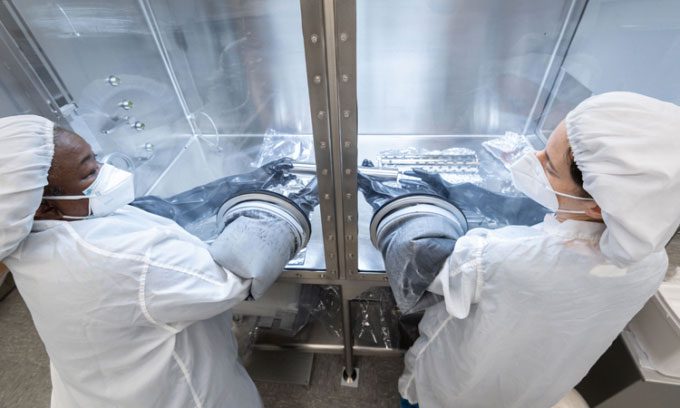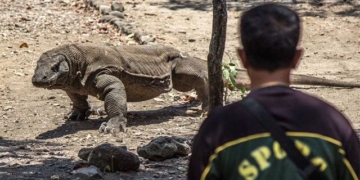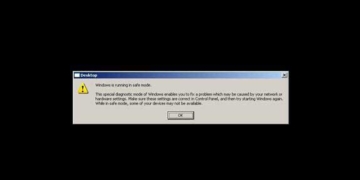Experts hope that the samples preserved under strict multi-layer conditions in a vacuum for 50 years will retain lunar gas.
For the past 50 years, geologists have dissected fragments from lunar rock samples brought back by the Apollo missions for analysis, leading to many significant discoveries. However, two sample tubes have been carefully preserved in a vacuum throughout this time. Recently, the sample tube brought back by Apollo 17 has been opened for research, IFL Science reported on March 10.

Scientists are very cautious during the opening of the lunar sample tube. (Photo: NASA/James Blair).
As technology advances, scientists can uncover more new information from the samples that six Apollo missions brought back from the Moon decades ago. However, any gases trapped within lunar material (if present) may escape during the time the samples are stored on Earth, preventing experts from examining them with modern equipment. They hope that the two samples stored in sealed tubes, which have never been opened, will be an exception.
“For the past 50 years, the lunar samples have been kept in a vacuum container, then placed into another vacuum box,” said Professor Alex Meshik from the University of Washington. The experts continue to place the sample container into a sealed Teflon bag and then into a nitrogen box, storing it in a vault to protect it from Earth’s atmosphere and light.
Meshik is part of the team designated by NASA to carefully open the samples with the hope of determining whether any gases exist within them, and if so, whether they are primordial material from the Moon or have infiltrated despite the meticulous preservation process.
The amount of gas that may exist in this sample will be very minimal. If extracted carefully, scientists could analyze and identify these gases using modern mass spectrometry technology. This technology has developed to be extremely sensitive, capable of accurately determining the mass of unknown molecules and using that data for identification.
“Understanding the geological history and evolution of lunar samples taken from where the Apollo missions landed will help us prepare for the types of samples we may encounter in future Artemis missions,” explained expert Thomas Zurbuchen at NASA.
The new research will indicate whether the Artemis missions need to seal samples more rigorously for the benefit of future generations of scientists, while also providing useful information for the preservation of Martian rocks later on.
The Apollo missions landed in various locations far apart in hopes of capturing the diversity of the Moon. The newly opened sample was taken from the sediments of an ancient landslide in the Taurus-Littrow Valley, within the 3.8 billion-year-old mountain range surrounding the Mare Serenitatis plain. The sample was buried so deeply that during the day on the Moon (which lasts about two Earth weeks), its temperature never exceeds 0 degrees Celsius, enhancing the likelihood of trapped gases inside.





















































